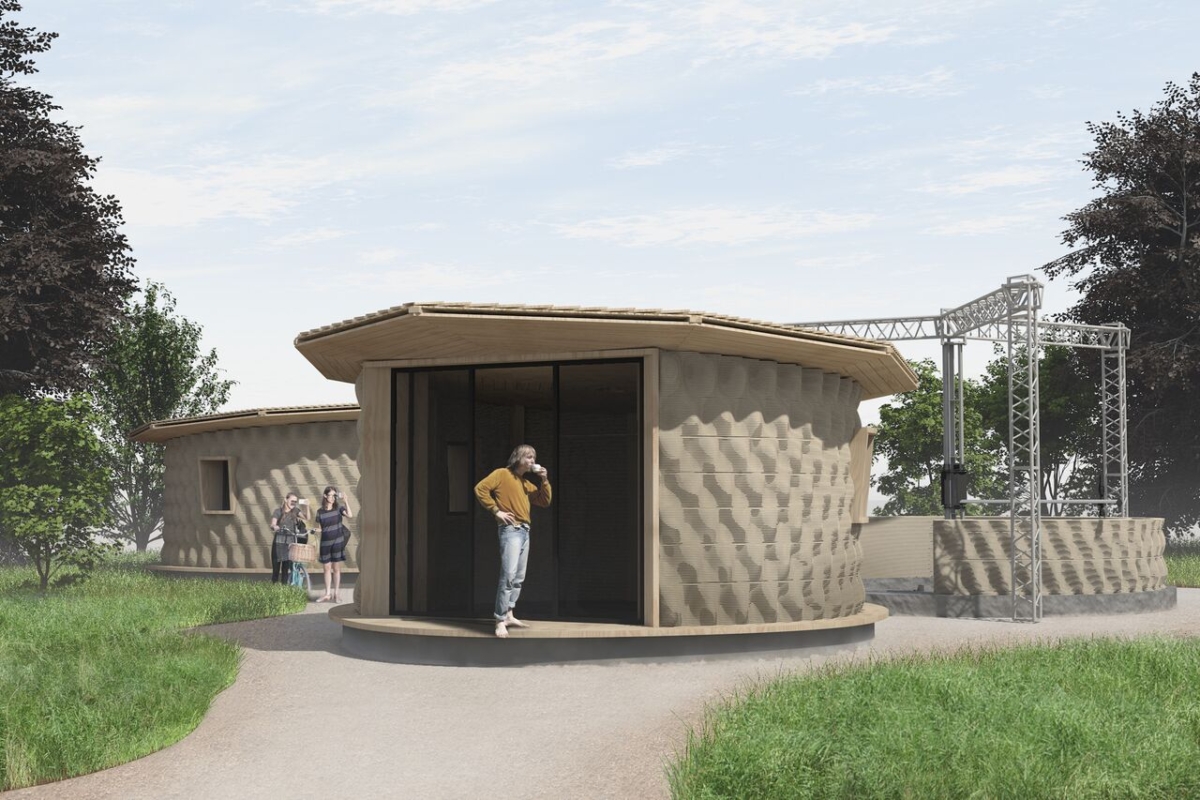
Italian 3D-printing company WASP (World’s Advanced Saving Project) has 3D-printed an environmentally sustainable house called Gaia.
The wall structure of the house is made from raw soil and local natural waste materials. Using vegetable fibres to develop a compound comprised of 25% soil (30% clay, 40% silt and 30% sand), 40% straw chopped rice, 25% rice husk and 10% hydraulic lime, a 3D printer called Crane WASP was used to print the walls on site.

“Gaia is a highly performing module both in terms of energy and indoor health, with an almost zero environmental impact,” said WASP in a statement. “Printed in a few weeks thanks to its masonry, it does not need heating or an air conditioning system, as it maintains a mild and comfortable temperature inside both in winter and in summer.”
The 3-D printed house is both environmentally sustainable and bioclimatic. Fitted with windows and a glazed door to optimize natural sunlight, a timber roof with 3D-printed concrete foundations creates thermal energy for the home. The wall structure of the house also provides natural ventilation and thermo-acoustic insulation.

“On the basis of the data experimented with Gaia, it is possible to concretely conceive new economic scenarios in which one hectare of cultivated paddy field can become 100 square meters of built area,” said WASP.
With the materials used in 3D printing the walls of the house costing just 900 EUR, Gaia is a case study that offers a cheap and sustainable building strategy for developing countries. By using local agricultural resources, this 3D-printing technique guarantees a minimal environmental impact.
To learn more about WASP and Gaia, click the link below.





